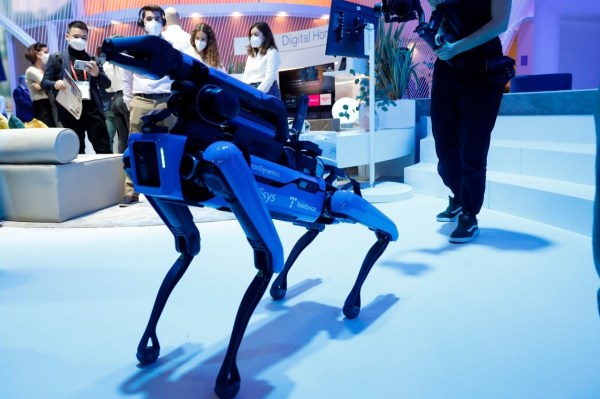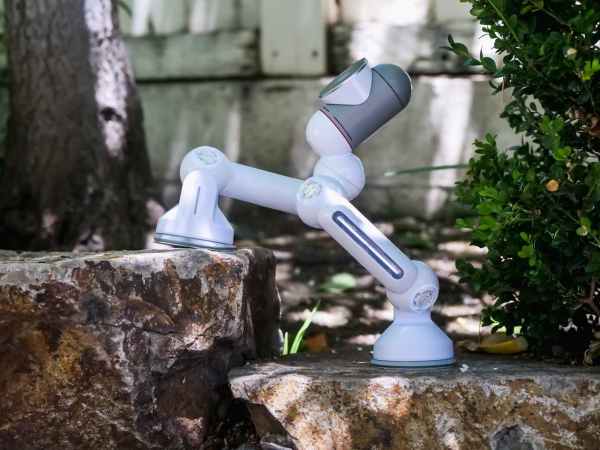Before analyzing which are the most famous characters of robotics today, we could define what exactly is this term, coined by Isaac Asimov as the science that studies robots. This word was first used in 1920 by the writer Karel Čapek from the Czech word robota, which means servitude or forced labor.
What is robotics and how does it differ from AI?
Robotics refers to the discipline responsible for the design of machinery capable of automating tasks, in which experts create, program and manage these elements to carry out the development of certain tasks and skills.
Although robotics and artificial intelligence are related, they should not be confused, the main difference between the two being found in the approach.
Robotics focuses on the manipulation of the physical area while AI is oriented towards the robot being able to move based on prior learning and not on set instructions to do a particular task. So an AI-based robot would be able to adapt to tasks based on that learning and a programmed robot would only be able to perform the tasks it has been configured to do.
Let us now look at some of the most influential figures in robotics, both from a practical and theoretical point of view.
Leonardo Torres Quevedo
The Spaniard Leonardo Torres Quevedo (1852-1936) is known in numerous fields and for some of the world’s engineering milestones, such as the Spanish Aerocar¸ the world’s oldest working cable car or air shuttle, located at Niagara Falls.
In the field of robotics he is known for having built in 1912 El Ajedrecista (the chess player), an automaton considered as the first one capable of playing chess in history, an experimental model presented in 1914 in Paris. Already in 1920 he built a second version that included notable improvements in its presentation, although without changes from the automatic point of view.
As indicated on the Torres Quevedo Museum website, “the chess players do not play a complete game, but rather the endgame of rook and king against king. The chess player drives the white pieces and its movement is based on a complicated mechanism composed of axes, drums… The second chess player worked through electromagnets located under the board, so that the pieces gave the impression of moving by themselves, which caused a great impact on the public”.
In short, Torres Quevedo “built the chess players to demonstrate his idea that the intellectual capacity of machines should be increased so that they could replace man in some jobs hitherto reserved for human intelligence”.
George Devol and Joseph F. Engelberger
George Charles Devol (1912-2011) and Joseph Frederick Engelberger (1925-2015) are considered the fathers of industrial robotics.
In 1954 Devol conceived the idea of a programmed article transfer device with which he succeeded a programmable manipulator, considered to be the ancestor of the industrial robot.
Engelberger founded in 1956 Unimation Inc, considered the first company in the world to develop robotics.
This company produced its first robotic arm after an improvement in George Devol’s design and despite the project’s losses, it opened the door for them to sell it to General Motors.
The device weighed 1,800 kilograms and its function was to lift and stack large pieces of hot metal.
The automotive company installed this arm in one of its factories in 1961, foreseeing the transformation that this was going to imply in the production model of the sector, which led to Chrysler and Ford also acquiring robotic arms shortly afterwards.
On the other hand, in 1978 Devol’s first programmable robot, called PUMA (Programmable Universal Machine for Assembly), was born. The device was capable of moving an object and placing it in any orientation and is the basis for most of today’s robots.
As a curiosity, in 1997 Engelberger received in Japan the award for the Advancement of Science and Technology for the contribution of industrial robots to the so-called Japanese miracle that began in the 1960s.
Isaac Asimov
Isaac Asimov (1919 or 1920-1992) was a biochemist who excelled in the field of literature through an extensive publication of works of science fiction, history and popular science.
Asimov also enunciated the three laws of robotics, the ethical basis for the subsequent development of autonomous systems:
- A robot shall not harm a human being, nor by inaction allow a human being to be harmed.
- A robot shall comply with commands given by humans, except for those that conflict with the first law.
- A robot must protect its own existence to the extent that this protection does not conflict with either the first or the second law.
These three laws first appeared in his work Vicious Circle (1942) and served as rules for the robots that in his stories had the ability to act on their own.
Victor Scheinman
Victor Scheinman (1942-2016) invented in 1969 the Standford arm, a six-axis, all-electric articulated robot, a technology for the use of robots in assembly and welding.
As a teenager, Scheinman designed and built a voice-controlled typewriter.
Takeo Kanade
Takeo Kanade (1945) is famous for having built in the early 1980s the first robotic arm with motors installed directly in its joint, which gave it much greater speed and precision than its predecessors.
Marc Raibert
Marc Raibert (1949) co-founded the company Boston Dynamics in 1992 and, together with other colleagues, created Big Dog and the DARPA Robotics Challenge, with whom he developed robots that ran and maneuvered like animals.
Of particular note is Spot the dog, an intelligent robot that went on sale in 2020 in the US for $74,500 and whose brain is made up of artificial intelligence algorithms capable of working autonomously, detecting problems and even predicting them.
Mark Tilden
Mark Tilden (1961) created RoboSapien in 2004, a robot with which he won a great deal of recognition and sold almost two million units.
It is a remote-controlled, human-shaped robotic toy with almost 70 pre-programmed functions and more than 80 steps for programming movements, capable of walking without wheels and even picking up objects with its hand and throwing them.
Conclusion
From the beginning of the 20th century to the beginning of the 21st century, we have seen how robotics has evolved to achieve increasingly complex mechanisms with elements that have been incorporated to make robots more sophisticated.
From the mid-twentieth century when industrial robotics began to spread to its current interaction with artificial intelligence, robotics is included in our daily lives helping us in the development of everyday tasks that cover not only the industrial sector, but also reaches the services or social.







